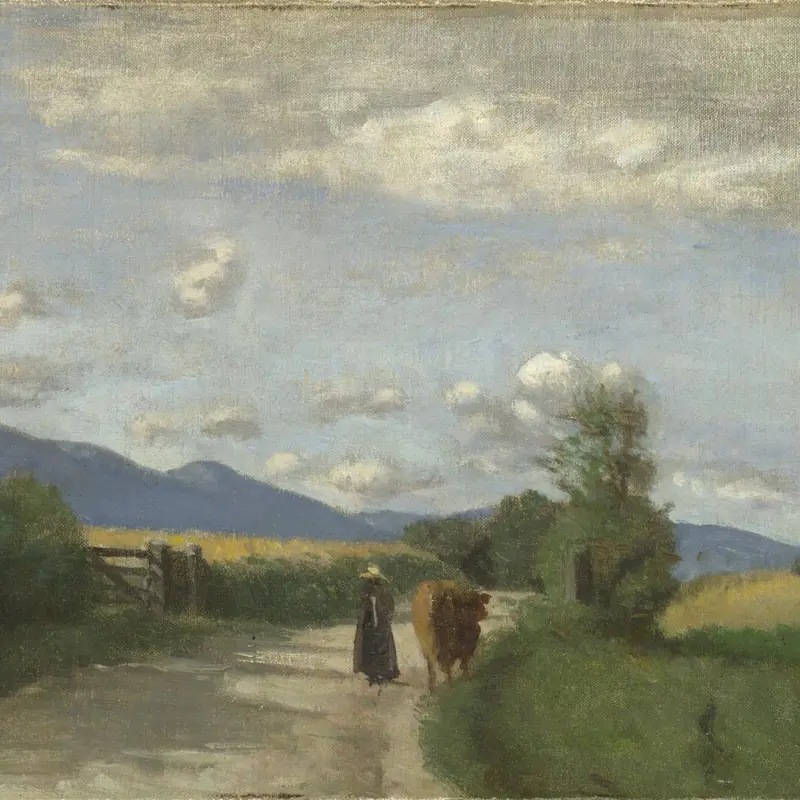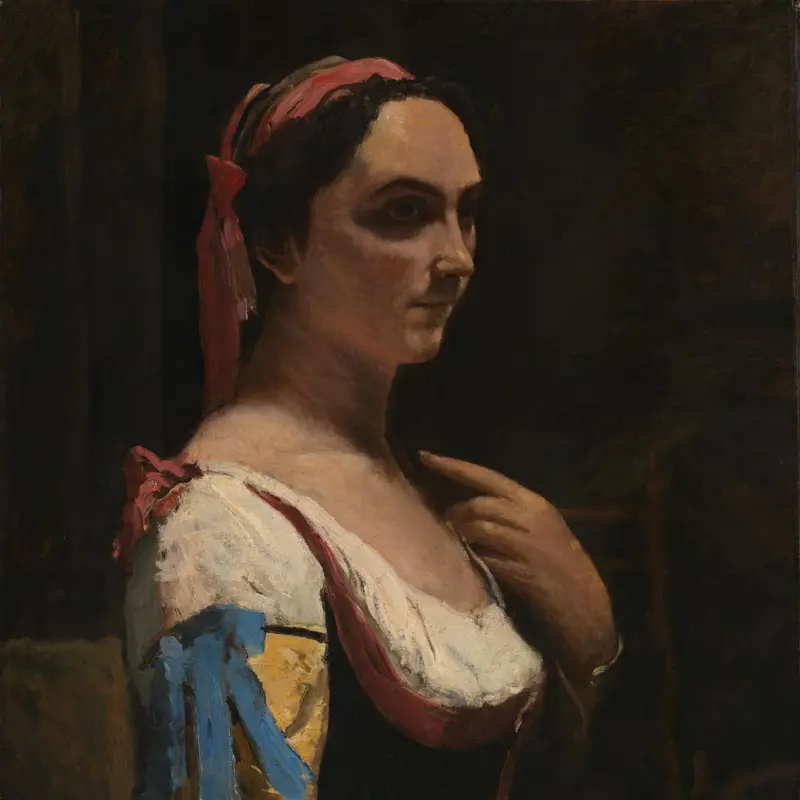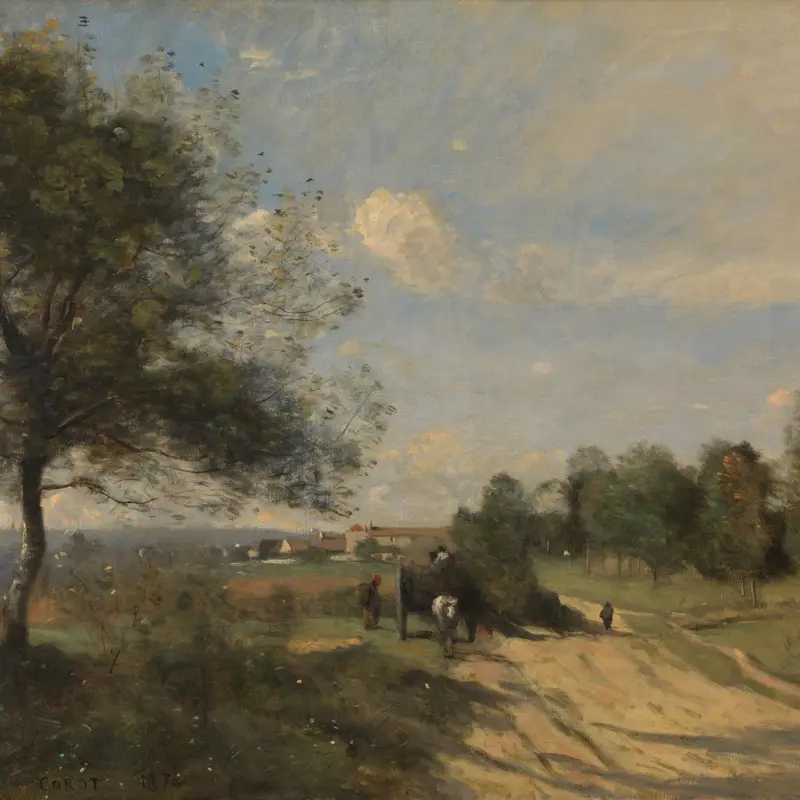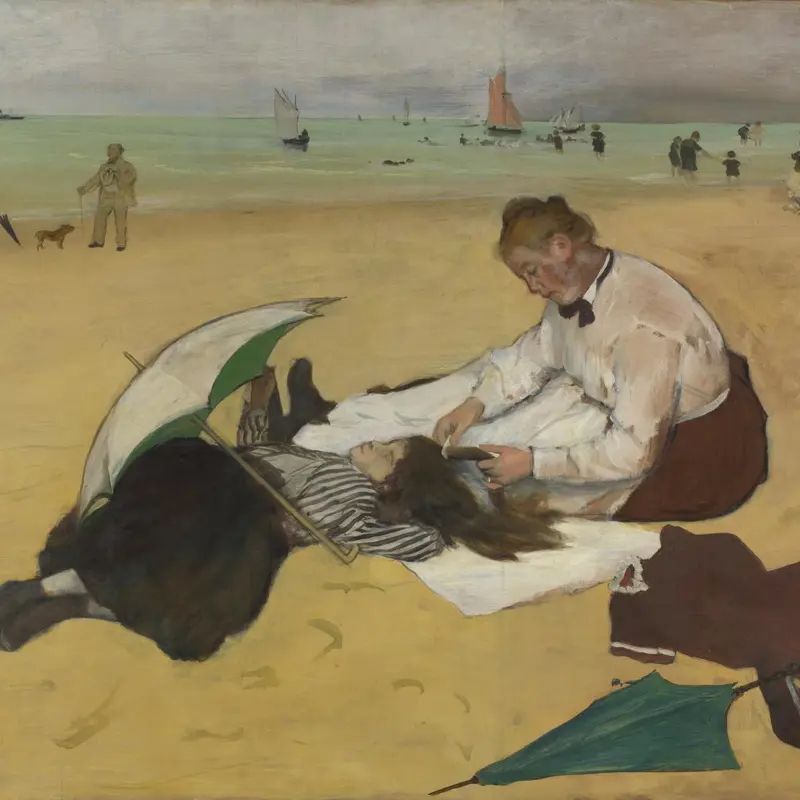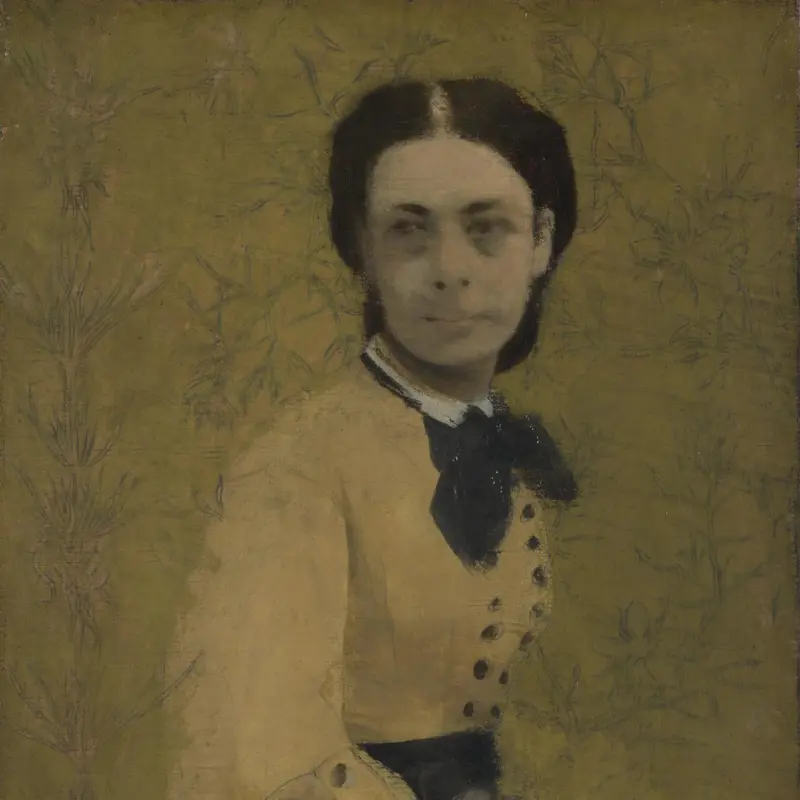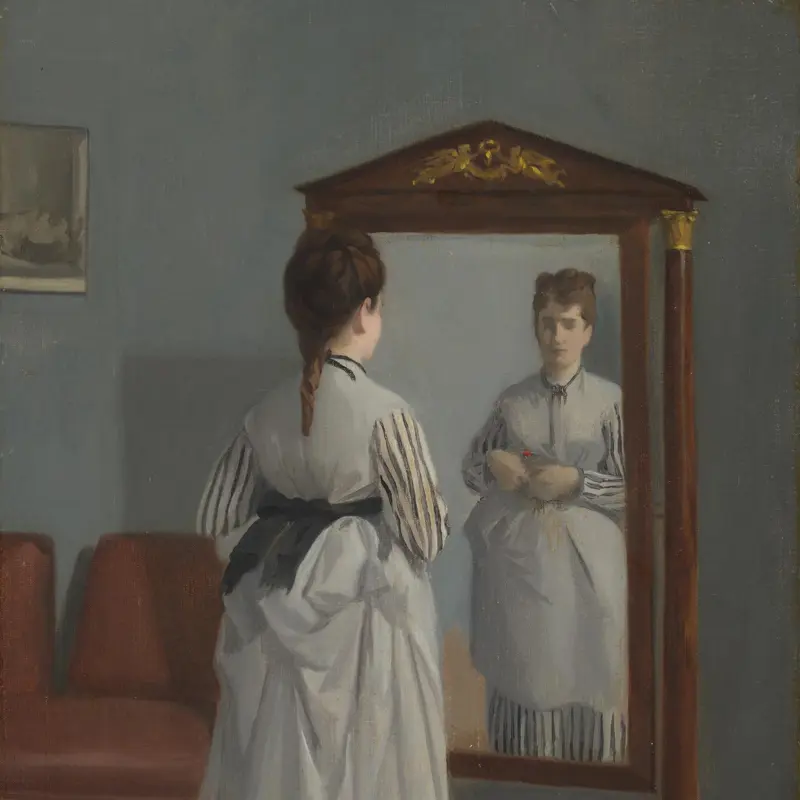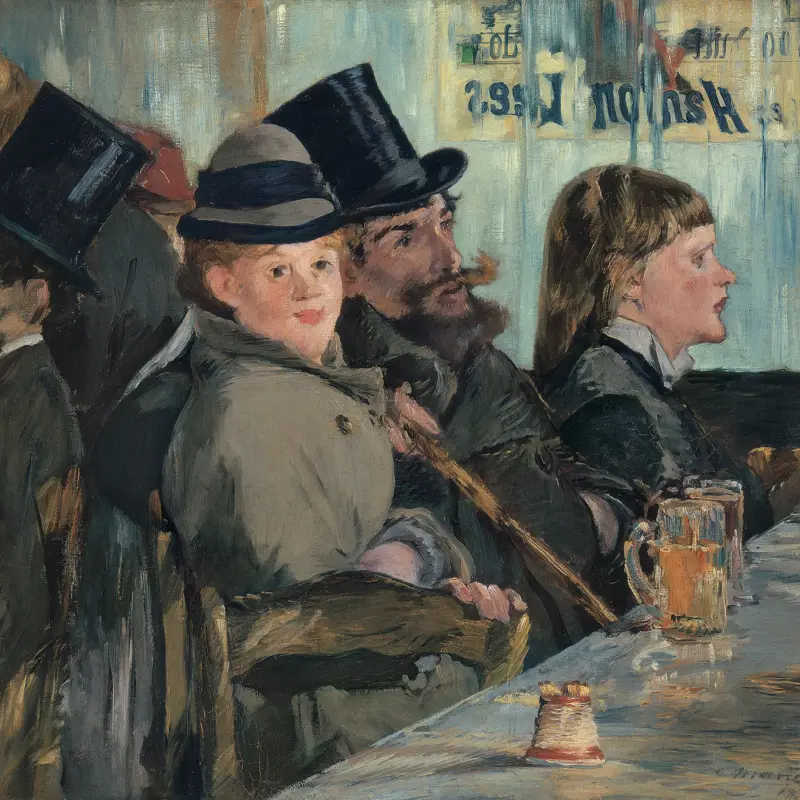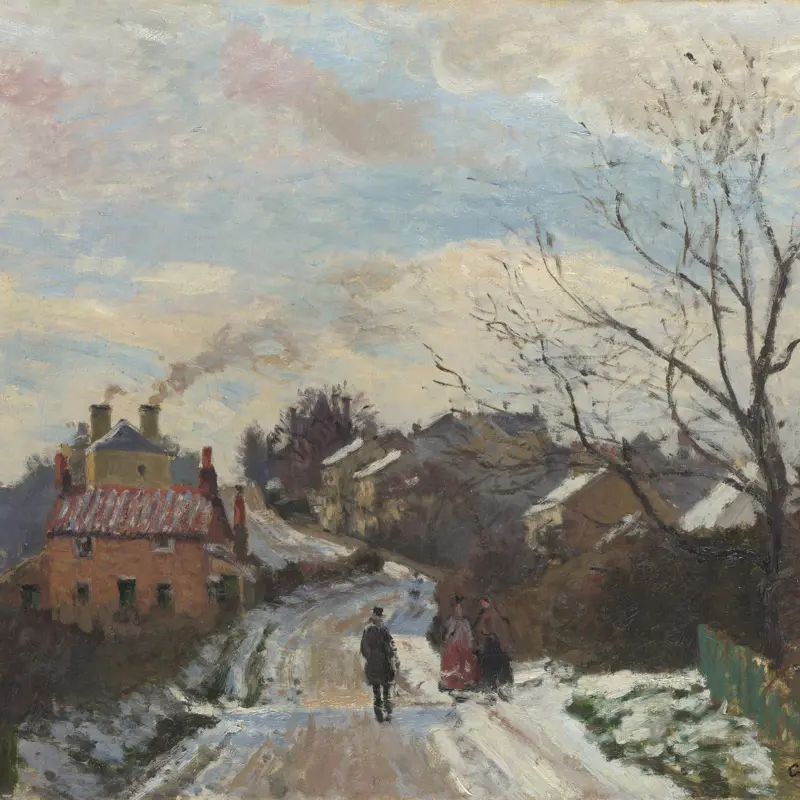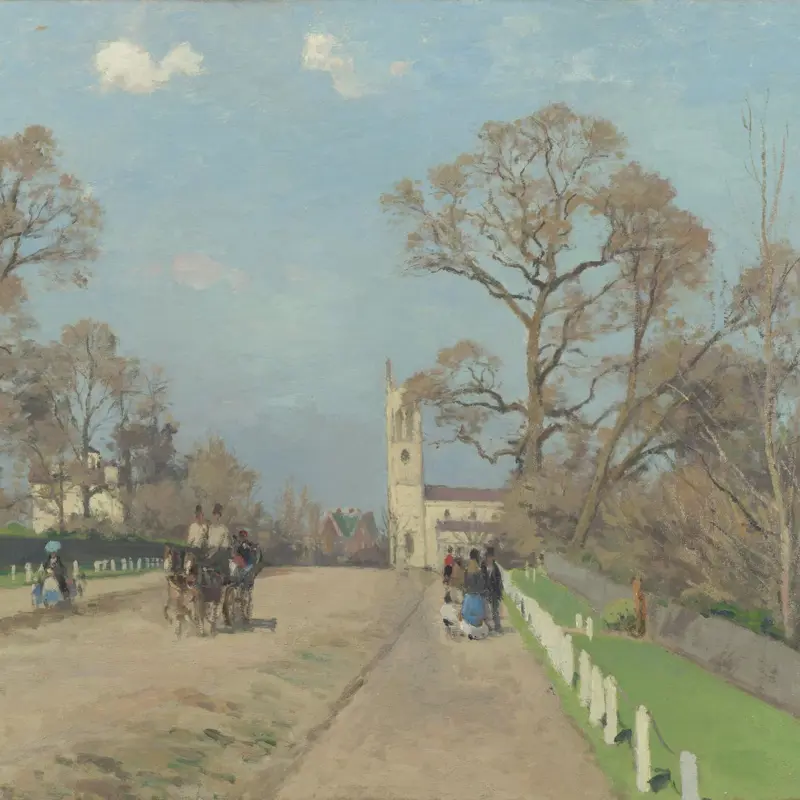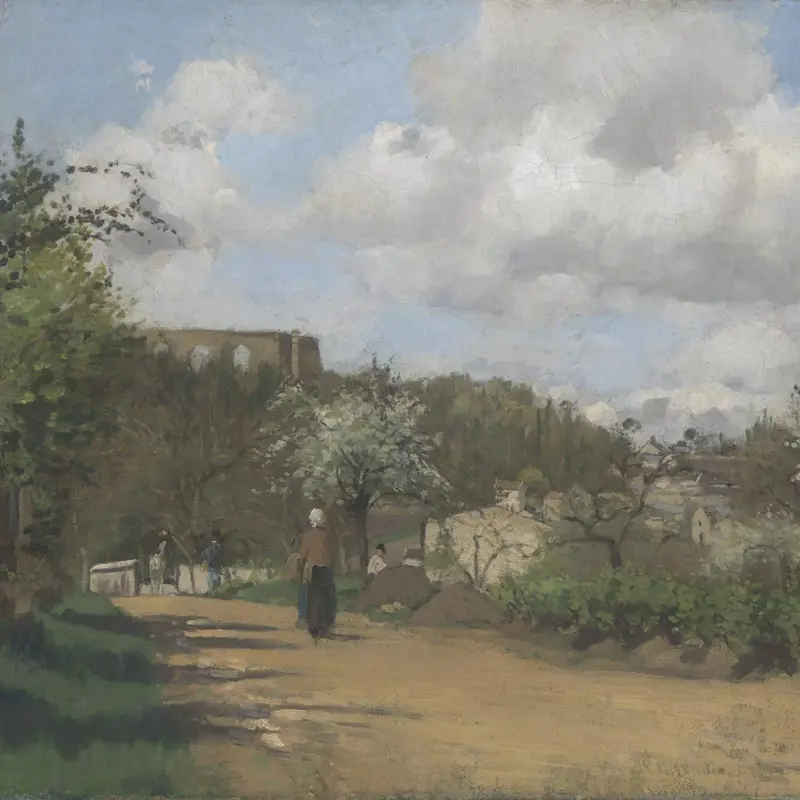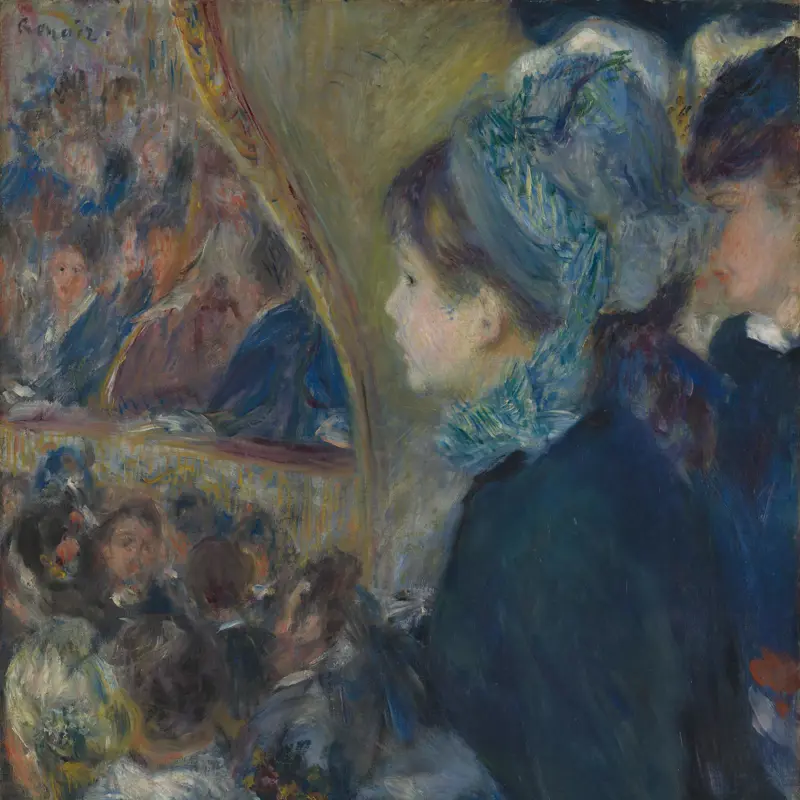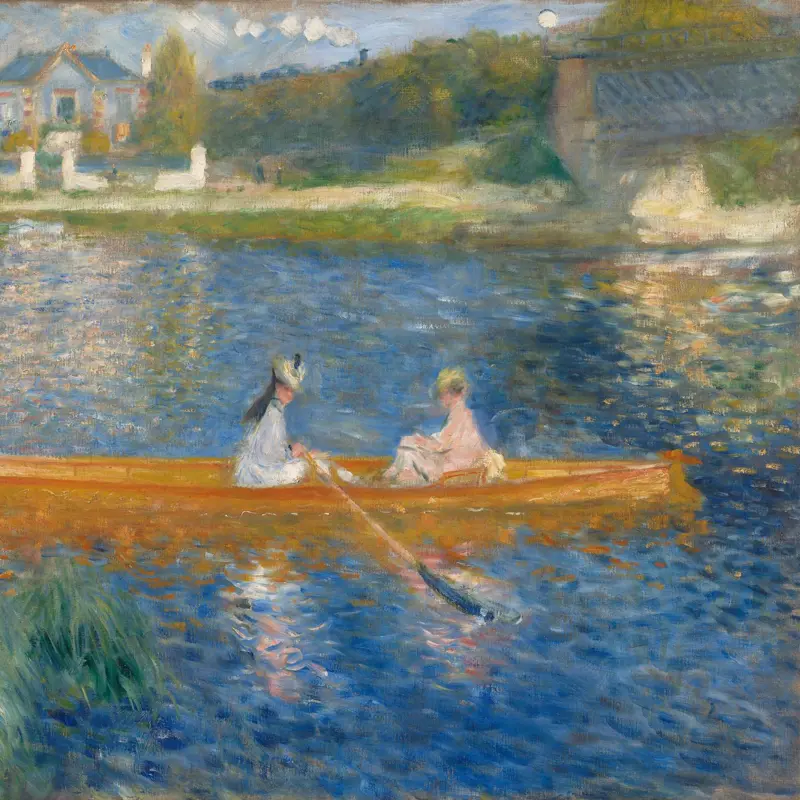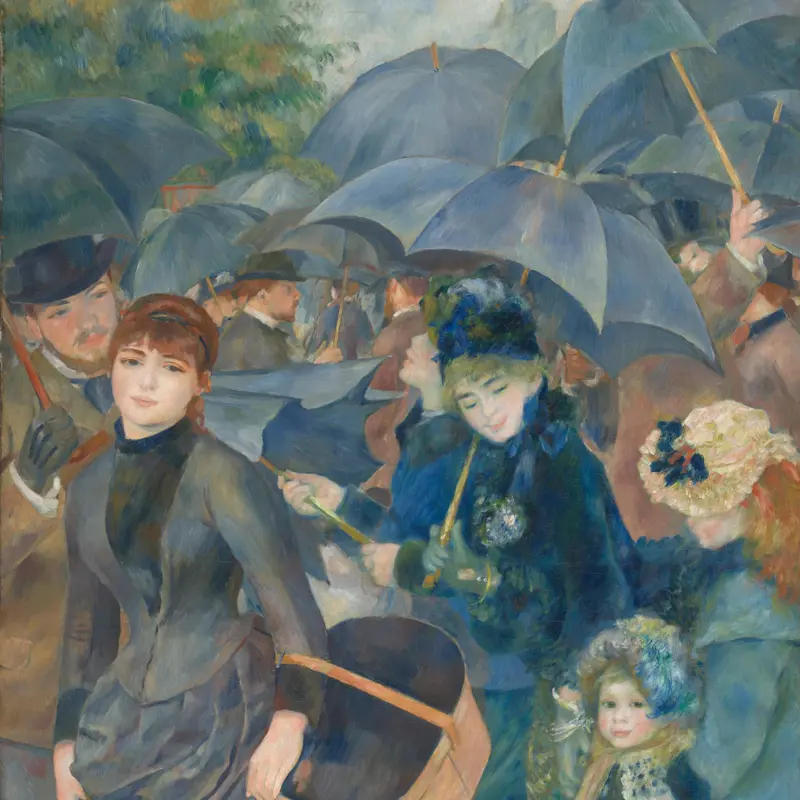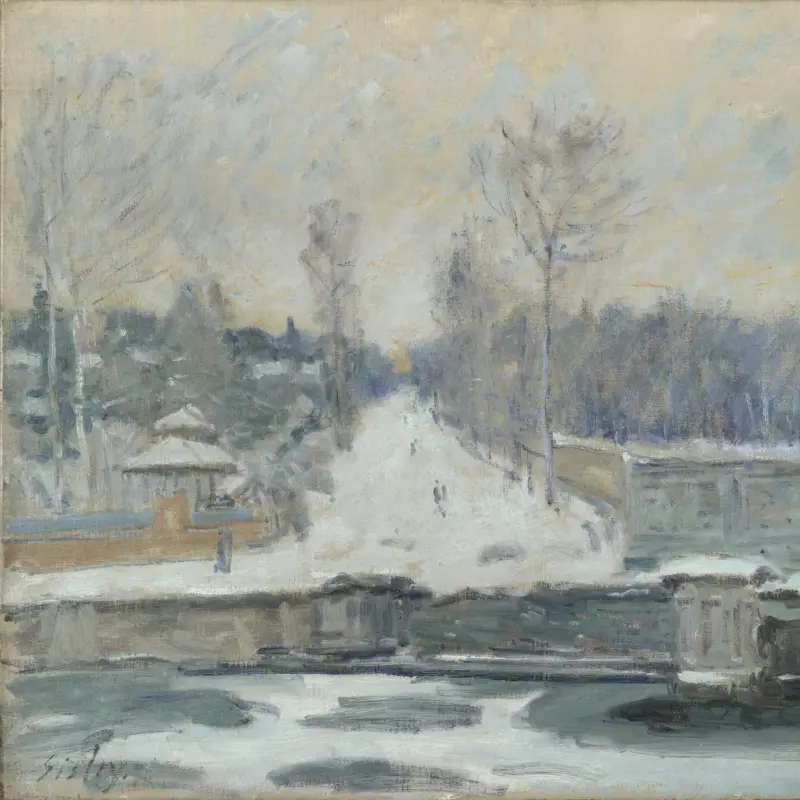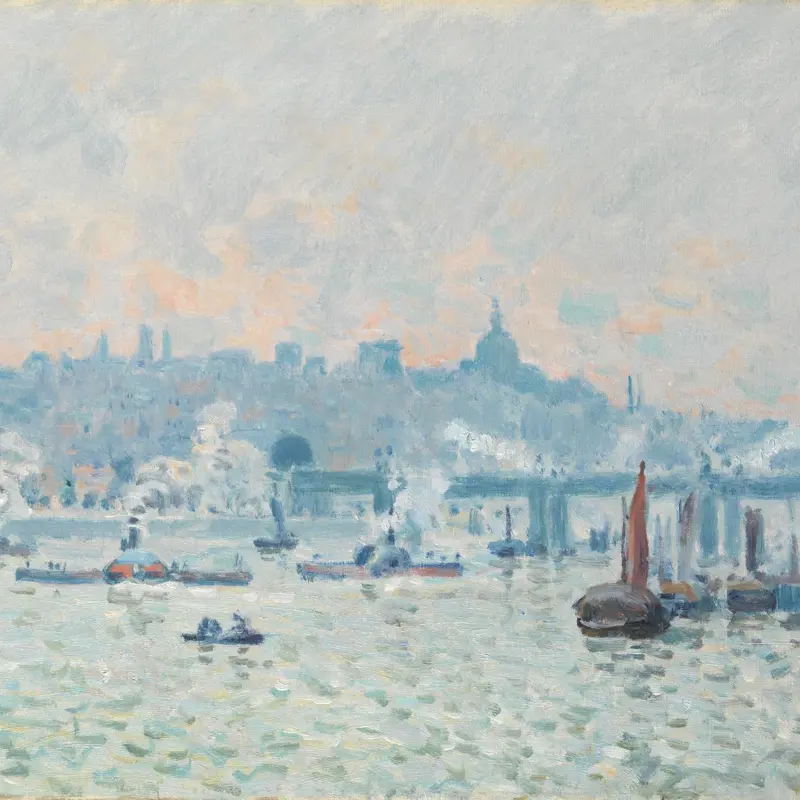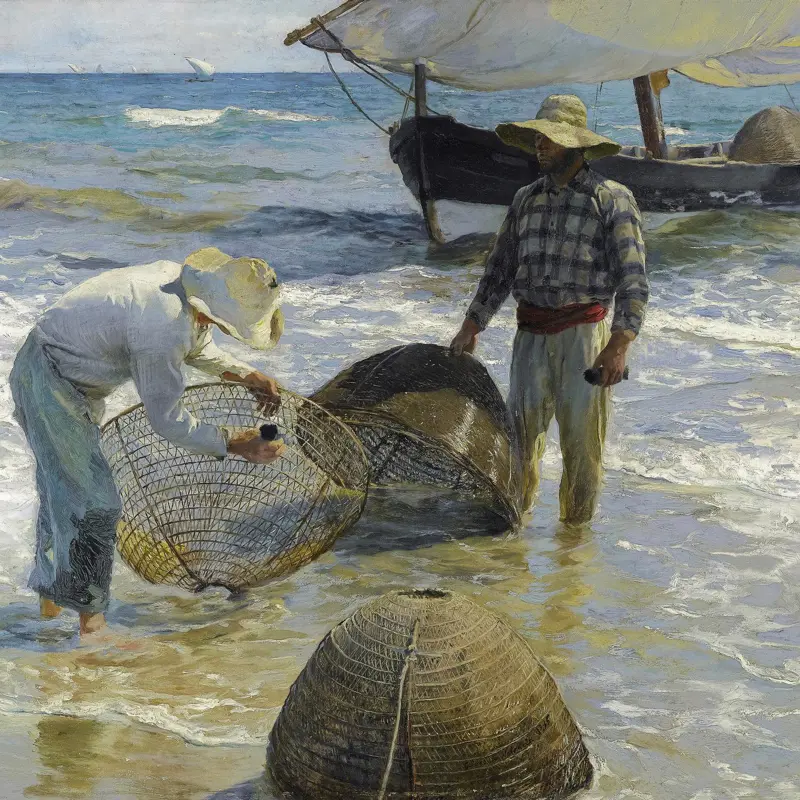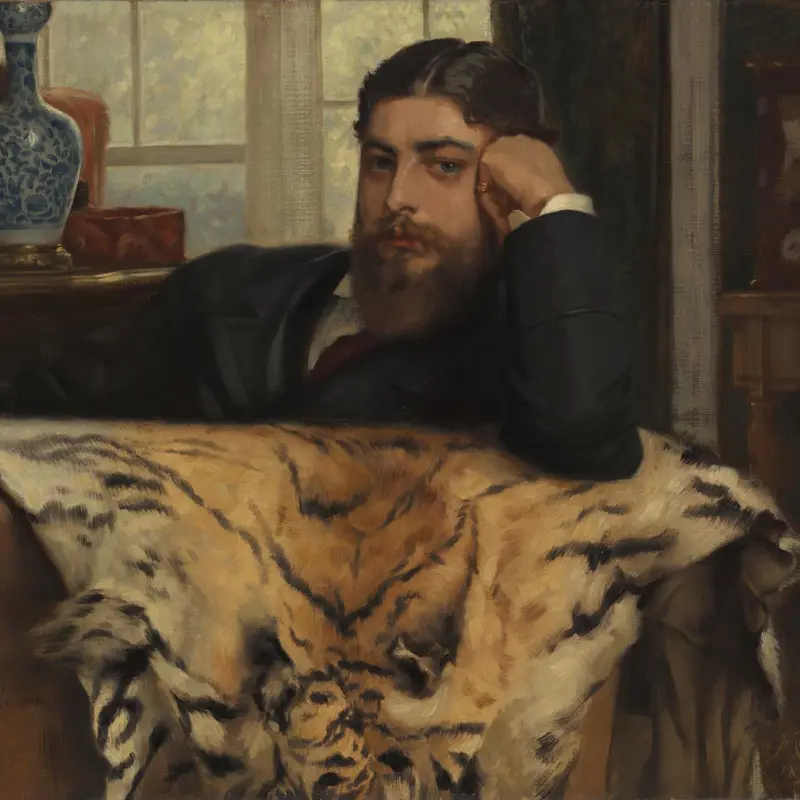In 1824 Constable's The Hay Wain was awarded a gold medal at the Paris Salon (the annual state-sponsored exhibition). Its painterly, expressive style altered the direction of French landscape painting. At the same time, artists like Corot turned their attention to landscape, spending many hours painting outdoors. Corot was an important influence on the next generation of artists who became known as the Impressionists.
In the 1860s, Manet focused particularly on subjects taken from modern life, using bold brushwork and sober colours. He showed works at the Salon throughout his life but was strongly criticised for both his subject matter and how he painted. The Impressionists also turned to modern subjects, such as railways, cafes and theatres. They used bright colours and free brushwork, aiming to capture the play of light. The subjects women artists could explore were restricted due to concerns about decency. Nevertheless, Eva Gonzalès and Berthe Morisot were celebrated for their intimate yet bold depictions of the lives of contemporary women.
Although the Impressionists were occasionally admitted to the Salon, their paintings were often rejected. In April 1874, they proudly declared themselves independent. They opened their first exhibition in Paris, where Monet exhibited the painting Impression, Sunrise that gave the group its name.


